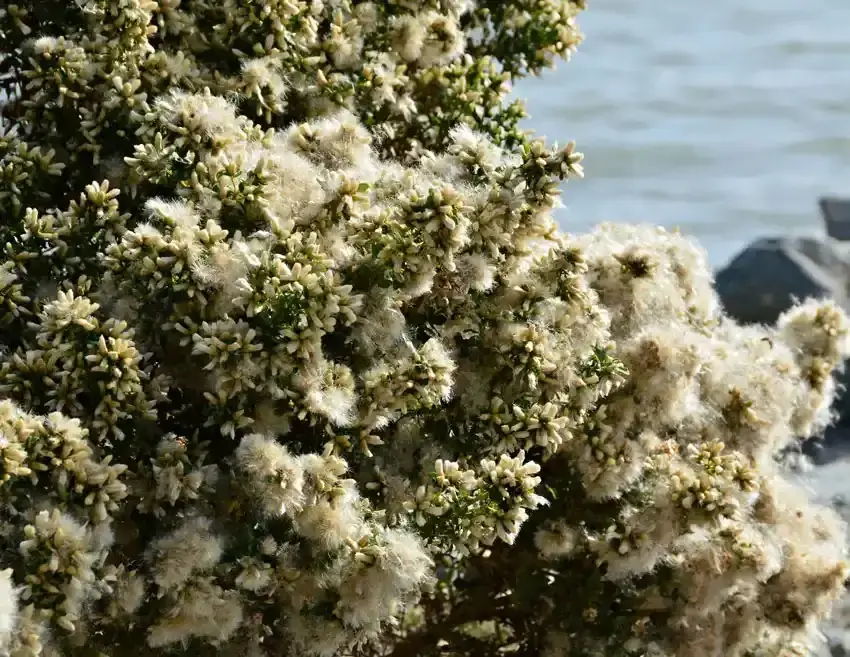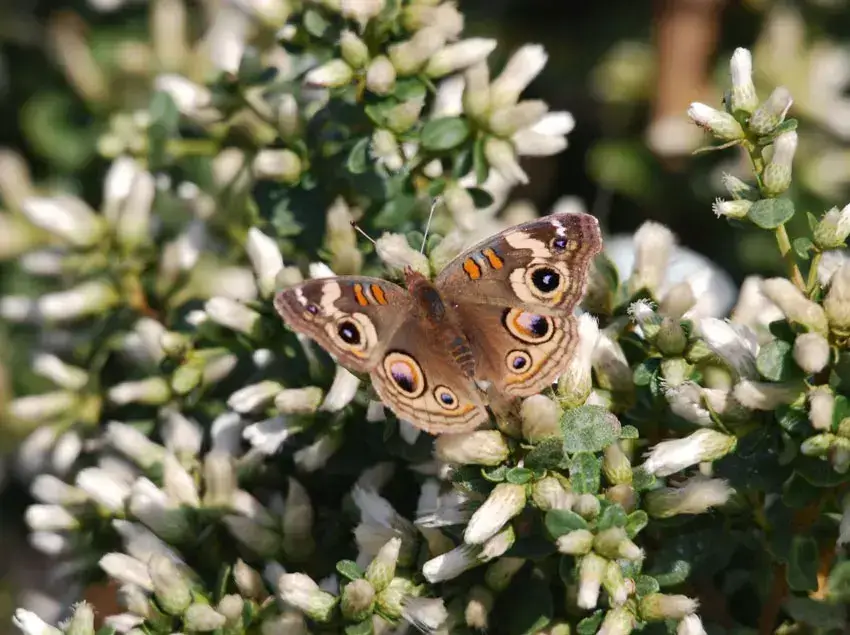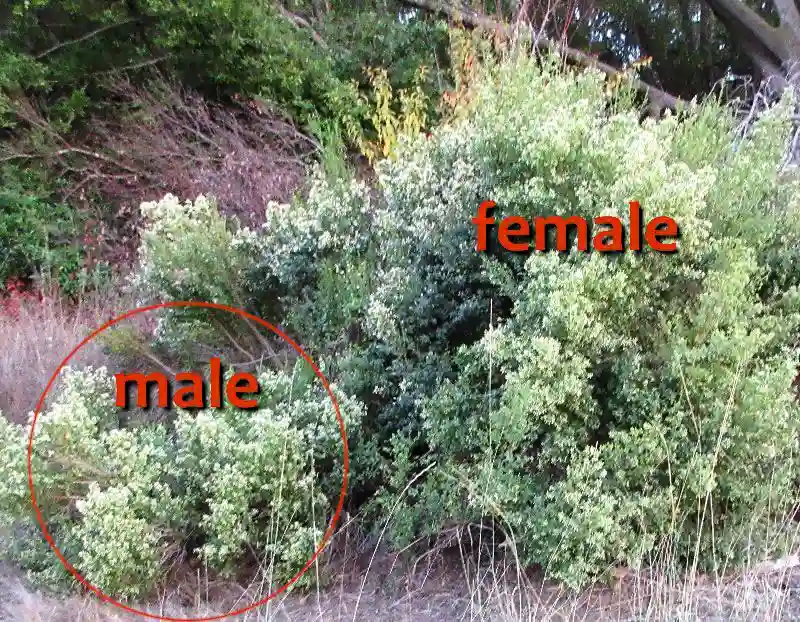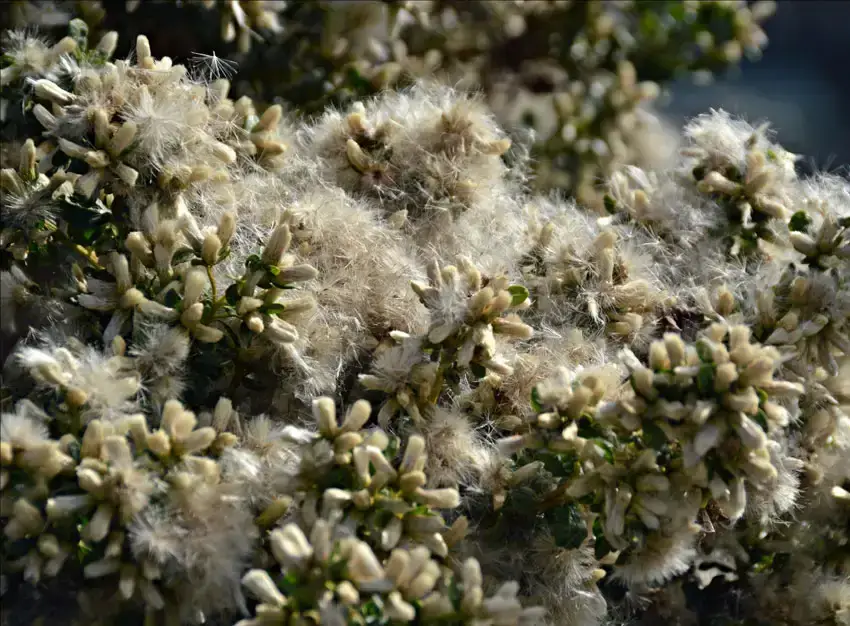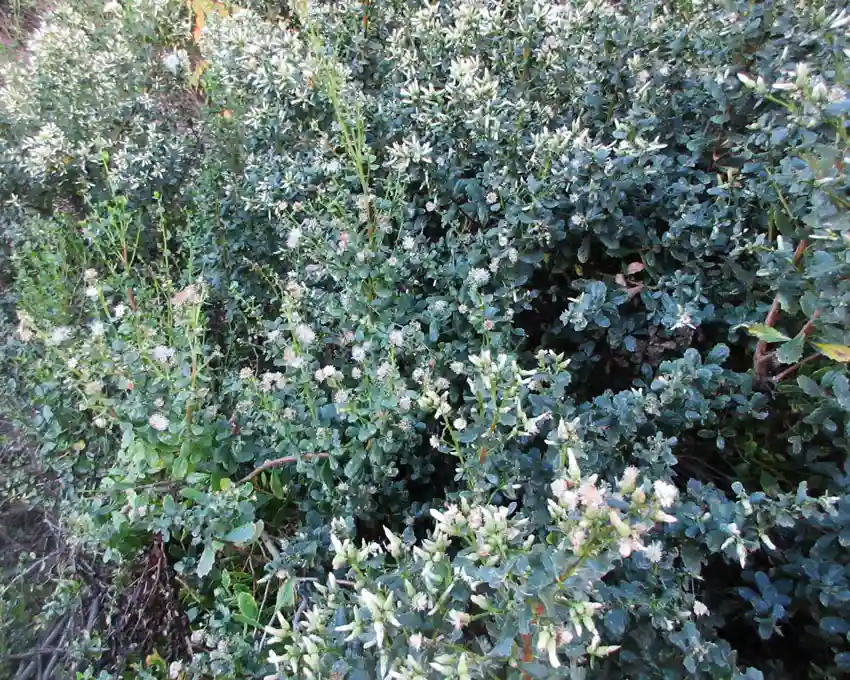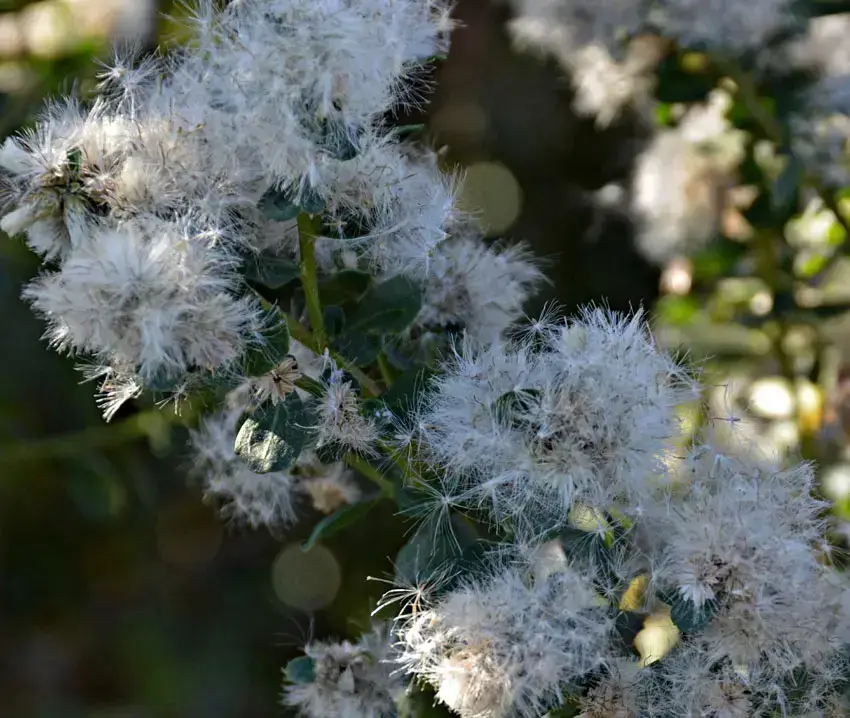This California native shrub grows in all sorts of plant communities in our wild lands and is also a valuable shrub in a habitat garden sanctuary. Studies have shown that this plant provides resources for more than 400 species of insects! In late summer, when the plants bloom, butterflies such as Buckeyes and Pygmy Blues swarm the plants seeking nectar.
Coyote Bush is a dioecious (a plant with two houses); meaning that male and female flowers occur on different plants. The male shrubs usually bloom first, providing pollen, and the females are in full bloom a bit later, providing nectar.
Though there is nothing particularly ‘showy’ about these plants, but they are a very hardy, drought tolerant plant that add good ‘green bones’ to any habitat garden. They are at their best in full sun, and once established, need very little water and depending on exposure, do fine with just rainwater!
In the wild Coyote Bush can get to be a very large shrub, and sometimes look a bit ‘rangy’; but in the garden it’s easy to keep it looking good and to a reasonable size of about 4 to 5 ft high by about 3 ft to 4 ft. wide. Every few years simply cut the whole plant back to about 12 or 18 inches from ground level (a pruning technique called ‘coppicing’). The plant soon sprouts vigorous new growth with fresh and beautiful new green leaves!
I like to call these plants ‘Coyote Brush’ because the female plants, in full bloom, look like a coyote brushed up against the plants and left some of their fur stuck all over the shrub. Male plants have bristly flowers (they need a shave) and the flowers of the female plants have soft, silky hairiness to them (they need a haircut)!
Most of the Coyote bush used in large landscapes are male plants (considered less messy) that are usually clones of named, low-growing varieties such as “Pigeon Point’ or ‘Twin Peaks’. They grow no more than a foot high and can spread to about six feet wide.
In a habitat garden, it is best to use the straight species (which Home Ground grows from seed) which provide greater bio-diversity and more natural resources for all the creatures that visit our garden sanctuaries.

